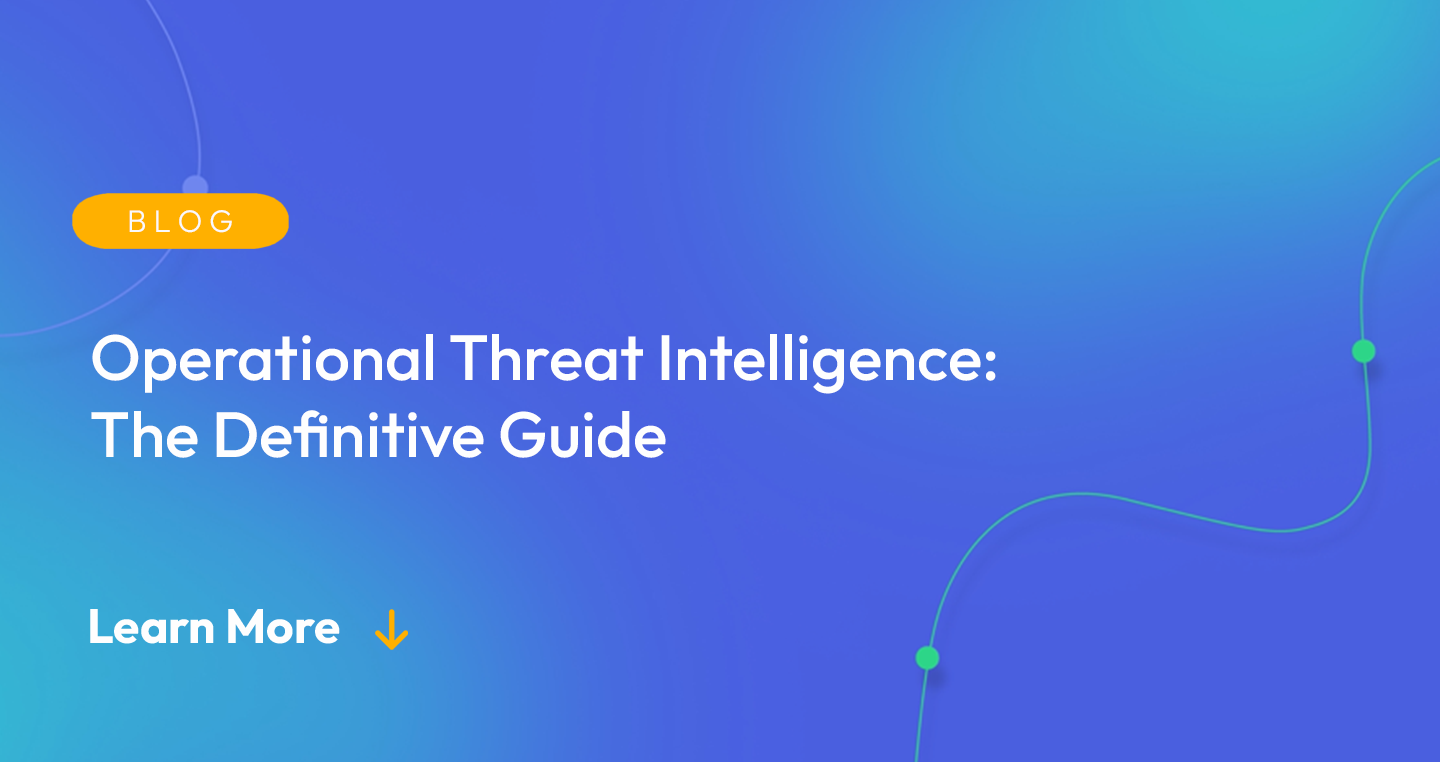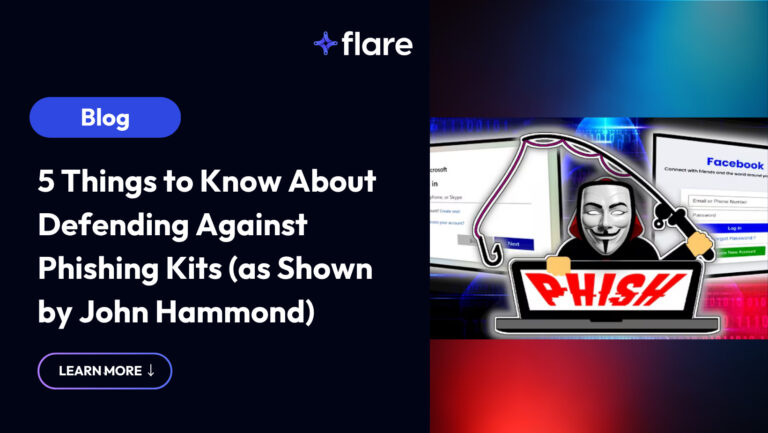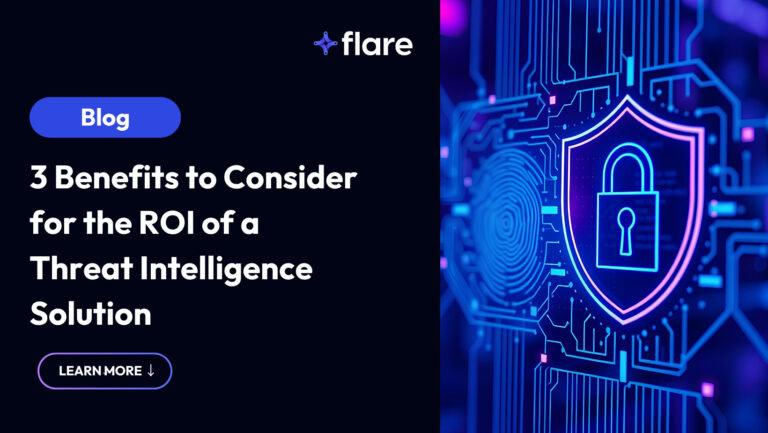
Cyber threat intelligence involves gathering and analyzing an assortment of disparate data to help make prompt and effective security decisions related to current or potential attacks and adversaries. But simply lumping all of this information under a general label like “cyber threat intelligence” ignores the fact that there are different ways to categorize this data depending on what it tells you and which situations it’s useful for.
The most common approach separates cyber threat intelligence into strategic, tactical, operational, and technical. This article provides the lowdown on operational threat intelligence, including good sources of this intel, several use cases, and some challenges in collecting high-quality data.
Flare’s SaaS platform can be used to easily collect actionable, structured threat data from across the clear & dark web, sets up in 15 minutes, and includes some of the most comprehensive coverage of any threat intelligence platform. Sign up for your free trial here.
What is Operational Threat Intelligence?
Operational threat intelligence provides actionable information about specific incoming attacks likely to affect an organization. This type of intel is very useful in the short to medium term for thwarting cyber attacks and even proactively responding. Operational intel usually relates to the nature, motive, timing, and methods used in specific campaigns or by specific threat actors.
It’s important not to conflate operational threat intelligence with technical threat intelligence. While understanding the nature, motives, and methods of an attack can leverage technical data such as malware hashes or fraudulent URLs, you can only piece together the full operational narrative using information gleaned from hacker communications in chat rooms, forums, and on social media.
Similarly, operational intel overlaps with tactical threat intelligence in that both help to clarify the tactics, techniques, and procedures used by various threat actors. However, tactical intel is more automated because it uses reference data from previously known attacks. The main source of tactical intelligence is evidence-based knowledge from sources such as open-source intelligence (OSINT) and commercial feeds, while operational intel requires data from a wider range of sources. Tactical intel also doesn’t say anything about the timing of potential attacks.
Use Cases for Operational Threat Intelligence
Here are three solid use cases for operational intel:
Operational Threat Intel for Incident Response
The more you know about attackers’ ways of operating and motives, the better you can respond to their actions. Effective operational threat intel equips incident response (IR) teams with the information needed to identify, contain, and eliminate impending attacks targeted at your organization. Detection methods can leverage a wider range of insights than traditional indicators of compromise (IOCs) when you have good intel on the timing and nature of attack methods used by different actors.
Operational Threat Intel for Vulnerability Management
Part of the difficulty with vulnerability management is that organizations struggle to take a risk-based approach to the problem. Overwhelmed by large volumes of detected vulnerabilities, you get a situation in which it still takes 60 days to patch critical vulnerabilities. Operational intelligence brings sharply into focus the riskiest vulnerabilities that hackers tend to exploit in specific campaigns. You can immediately apply patches to any vulnerabilities revealed by your intel that hackers are likely to target.
Operational Threat Intel for Security Operations
Security operations teams centralize security monitoring. Solutions such as SIEM help to aggregate and correlate data collected from various security and network tools, and then alert security analysts to potential threats. But since these alerts can become overwhelming, operational threat intelligence helps to focus security operations on imminent and genuine threats. Analysts can create rules to block traffic on certain ports or otherwise enrich security events/alerts to make them more useful.
Challenges in Gathering Operational Threat Intelligence
Operational Threat Intel can be Difficult to Access
While threat intel feeds are accessible either for free or at a price, operational intel is incomplete without some way of intercepting or accessing hacker communications to determine the motives and potential timing of attacks. These discussions often occur on the dark web, that hidden corner of the Internet only accessible with specific web browsers.
Threat groups communicate in various forums, social media sites, chat channels, and marketplaces. The problem is that gaining access to these discussions is not always straightforward or even legal. More advanced threat actors often go out of their way to only use private and heavily encrypted methods of communication.
Further complicating matters is that threat groups employ various tricks to obfuscate their intentions or communications. These tricks involve changing aliases regularly and using code names for specific targets, attack methods, or other words that might reveal the nature of their attacks.
Language Barriers
There are also language barriers to consider when you remember that threat groups often originate in non-English speaking nations. Gathering actionable operational intel on these groups requires a native speaker who also has insight into the forums and chatrooms in which these cybercriminals tend to congregate.
Operational Threat Intel can be Time-Consuming
Benjamin Franklin’s old aphorism that time is money rings true for businesses running a threat intel program. The more time spent gathering and analyzing data, the higher quality the insights must be to justify the cost of that time investment.
Gathering operational intel is inherently time-consuming because it often involves manually trawling through dark web forums and searching for discussions about potential attacks. Analyzing the data for actionable insights is also a daunting task because there’s usually a lot of noise; social media sites and chatrooms are easy to get data from, but they are also filled with large volumes of information that regularly turns out to be useless.
Overcome the Barriers to Operational Threat Intel
There’s no getting around the fact that gathering actionable operational intel is an arduous task. But there are ways to overcome the barriers, particularly by introducing more automation to the process. And given the nature of the modern threat landscape, it’s worth the effort to obtain this type of intelligence.
Flare’s cyber threat intelligence platform puts the information advantage back in your hands. With unmatched coverage across the dark web & clear web, you get automated operational intel about illicit Telegram channels and dark web forums that mention your organization by name. This level of automation saves precious time and reduces the costs of gathering valuable operational threat intelligence.
Flare also reduces noise for security operations teams with contextual alerts that use a risk-based approach on structured and unstructured data.
Try a free trial with just a 15 minute setup.





